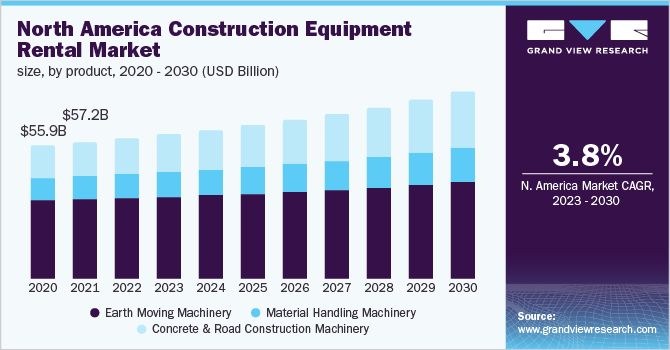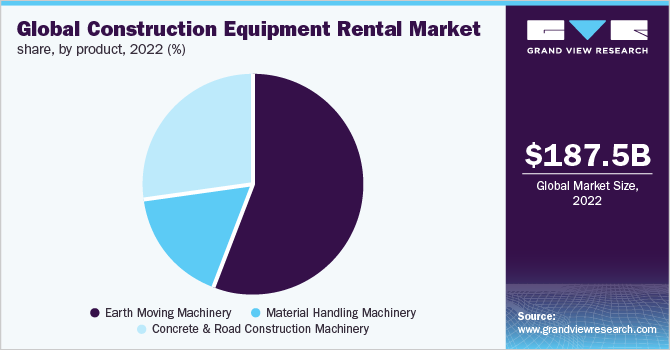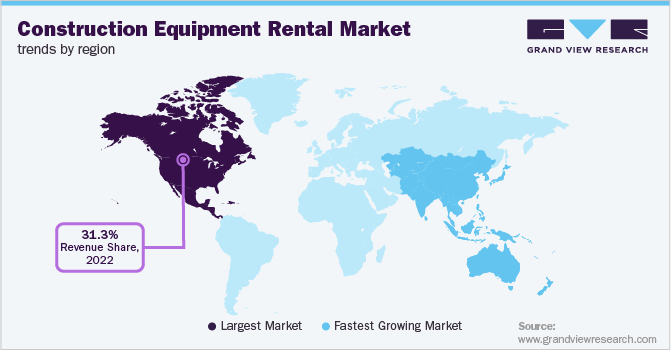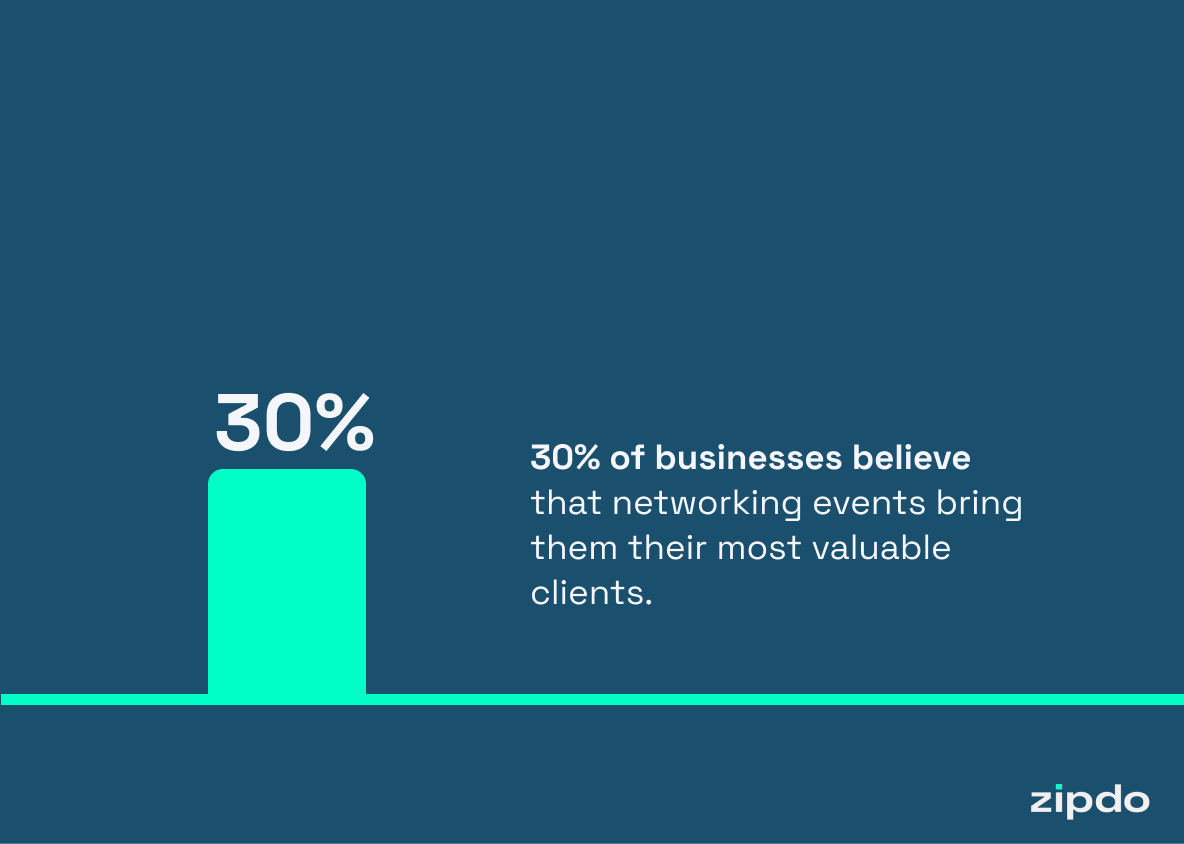The equipment rental industry is a major market, projected to grow at a compound annual growth rate of 5% from 2023 to 2030. With construction and industrial activity continuing to expand, the demand for rented equipment like aerial platforms, forklifts, and compactors will only increase.

This guide will walk you through how to start an equipment rental business. Topics include market research, competitive analysis, registering an EIN, obtaining business insurance, forming a legal business entity, and more. Here’s everything to know about starting an equipment rental company.
1. Conduct Equipment Rental Market Research
Market research into the equipment rental industry helps you formulate a structured business plan.

Some details you’ll learn through business research include:
- The industry is also becoming more consolidated as national chains acquire independent rental companies.
- Specialty equipment like trenchers, concrete pumps, and carpet cleaners have high daily rates and strong margins. Focusing on a specialty rental niche can be lucrative.
- Companies are renting equipment for longer periods as projects expand in scope and complexity. The average rental duration has doubled over the past decade.
- Penetration of rentals vs direct equipment purchases will also rise. As more contractors and event planners realize the flexibility and cost savings of renting instead of buying equipment outright, these penetration rates will increase.
The equipment rental industry offers several promising opportunities, especially for specialized niches such as pest control, gardening work, mobile welding, and more. The outlook for both revenue growth and improved profit margins looks positive over the next five years.
2. Analyze the Competition
Understanding the competitive landscape is critical for any new business, including equipment rentals. First, identify direct competitors in your geographic area to analyze.

Drive around town and note current rental companies’ locations, fleet sizes, facility conditions, and marketing messages. Search Google Maps and business directories for rental companies to ensure you have a comprehensive list.
Scrutinize competitors’ websites and online listings. Evaluate site quality, search rankings, reviews and ratings, rental fleet details, and ease of rental reservations. Poor web presence and lack of online booking signal opportunities to outcompete. Compare rental rates and equipment availability across these listings.
You can also learn volumes from competitors’ customers. Search online reviews across Google, Facebook, and rental review platforms like RentEq. Look for customer complaints and shortcomings like broken equipment and slow repairs. Use sentiment analysis to gauge relative brand perception.
Analyzing rental industry data at a metropolitan and national level provides useful context around market size, growth, segments, consumers, pricing, and trends to incorporate into competitive plans too. Established companies’ financial filings may indicate their revenue scale, costs, and inventory investments.
3. Costs to Start an Equipment Rental Business
When starting a heavy equipment rental business, there are a variety of one-time start-up costs to consider even before opening for business. Properly estimating and budgeting for these expenses is vital:
Start-up Costs
One of the biggest initial investments is securing a rental facility, whether leasing, renting, or purchasing property. Leasing warehouse space of at least 2,500 square feet could cost $3,000-$4,000 per month in lease payments, or around $150,000 to purchase a similar-sized site.
The equipment rental fleet forms the core offering and largest capital investment. Most operators start small with 5-10 rental assets, but an ideal starter fleet is 15-25 units with a mix of equipment types like aerial lifts, forklifts, excavators, loaders, and compactors.
Specialized commercial insurance is mandatory, including general liability ($2,000/year) and commercial property insurance ($4,000/year). Carry adequate umbrella insurance limits as protection from lawsuits. Work comp insurance will also be necessary if hiring employees.
A box truck, trailer, van, or pickup will be needed for equipment delivery and transport. Allocate $40,000+ for a reliable used vehicle that can haul equipment. Shop tools, safety gear, an office computer, and materials handling equipment (pallet jack, lifts, etc.) also add up.
An attorney can provide legal guidance on forming the business entity and reviewing contracts and leases for roughly $3,000-$7,000. Accountants handle taxation paperwork for $1,000-$2,000. Logo design, branding, and creating online assets cost around $4,000.
Registration fees and licensing for commercial rental businesses depend on state and locality but often total less than $500 annually. More substantial costs may apply for emissions permits, waste disposal, bonded contractors, and safety certifications.
Ongoing Costs
On the flip side, monthly and annual operating expenses tend to be lower after launch:
A small operation may only require hiring delivery drivers and equipment technicians as needed at $15-$25 per hour. As the business grows to support office administration and sales staff, estimate $45,000+ in total annual payroll expenses.
Aside from the mortgage/rent and utilities on the warehouse and office space at roughly $4,000-$7,000 monthly, there are also facility maintenance and equipment repair costs to consider down the line.
Digital advertising, print mailers, sponsorship of events, website hosting, and graphics work to promote the brand will likely require a marketing budget of $7,500 per year initially.
Insurance, licensing, accounting fees, and other fixed costs will persist while equipment financing payments may continue for years. However, keeping inventory utilization and customer retention high will keep the doors open and profitable.
4. Form a Legal Business Entity
Running your own equipment rental business requires you to form a legal business entity. To rent equipment to customers, you’ll need to be registered as one of the following four entities:
Sole Proprietorship
Sole proprietorships are the simplest structure with no distinction between the individual owner and their company from a legal and tax perspective. Equipment rental companies operated as sole proprietorships benefit from the ease of setup and minimal paperwork. The owner assumes unlimited personal liability for debts and legal disputes involving the business.
Partnership
General partnerships involve two or more co-owners sharing control and profit. Partnerships allow pooling more startup capital to invest in an equipment rental fleet and tapping partners’ complementary experience. However they provide no liability protections for partners; each partner can be held personally liable if sued by a customer, vendor, or employee.
Limited Liability Company (LLC)
Limited liability companies (LLCs) represent the best overall choice. LLCs combine pass-through taxation similar to sole proprietors without unlimited liability. LLC status shields personal assets from rental business debts and lawsuits. Compared to corporations, LLC operating agreements offer greater flexibility.
Corporation
C corporations stand as distinct legal entities from their owners. Shareholders have limited liability, but profits are taxed at both the corporate rate and shareholder level upon distribution of dividends. Significant record-keeping and reporting requirements also apply to corporations.
5. Register Your Business For Taxes
An Employer Identification Number (EIN), also called a Federal Tax Identification Number, essentially serves as the Social Security number for your small business when forming a legal entity like an LLC. Specifically, an EIN is crucial for equipment rental companies to:
- Open a business bank account
- Pay taxes on company profits and employees
- Apply for business licenses and permits
- Operate as an LLC or corporation
Obtaining an EIN is thankfully quick and convenient through the IRS website. Follow these steps:
First, go to the IRS EIN online application. Select View Additional Types, click View All Additional Types, then choose Limited Liability Company for the business type.
Enter the LLC’s legal name and address. Select the appropriate reason for applying and attest you have the authority to apply for the EIN.
Finally, select owner or member-managed LLC classification and provide owner information. Specify the number of LLC members and if the LLC will have employees in the next 12 months. Agree to the terms and submit the EIN application.
The EIN should be assigned immediately upon hitting submit to the applicant or the IRS will send it by mail within 7 days. Now the rental business can officially operate as an LLC!
Finally, remember to complete state or local requirements around sales tax permits, business licenses, and any rental or contractor-specific registrations. Many jurisdictions have associated filing fees under $100. With the EIN and state-level obligations fulfilled, equipment leasing can commence!
6. Setup Your Accounting
With significant investments in rental equipment and revenues tied to utilization rates, astute financial management is imperative in the equipment leasing sector. Tracking all expenses related to fleet purchases, transport, repairs, staffing, marketing, facilities, and other overheads ensures adequate cash flow and profit margins month-to-month.
Accounting Software
Implementing small business accounting software like QuickBooks provides the foundation for organizing financial data. QuickBooks seamlessly syncs with bank and credit card accounts to import and categorize transactions. It automates tasks like invoicing clients, tracking receivables, processing payroll, and generating financial statements.
Hire an Accountant
Most equipment rental businesses should partner with an accountant for advisory services beyond what software allows. Common requests include establishing capital equipment depreciation schedules to optimize tax deductions, preparing fiscal year-end tax filings, and conducting audits or compilations of financial statements.
Apply for a Business Bank Account and Credit Card
Properly separating business and personal finances prevents commingling assets that muddle profitability and tax liability. Start by opening a dedicated small business checking account and apply for a business credit card in the company name using the recently acquired EIN.
7. Obtain Licenses and Permits
Before an equipment rental operation conducts its first customer transaction, becoming properly licensed and permitted at both state and local levels is an absolute must. Find federal license information through the U.S. Small Business Administration. The SBA also offers a local search tool for state and city requirements.
Common rental licensing includes:
General business licenses to legally register the company based on location and corporate structure. In some areas, additional registrations like bonded contractor licenses help qualify for public sector rentals.
Industrial equipment operation permits mandating designated operators pass certified training to legally handle certain rental equipment like forklifts, backhoes, boom lifts, or truck-mounted diggers.
Pollution Control permits related to emissions from gas- or diesel-powered compressors, generators, pumps, and other rental equipment. Rental fleets must comply with state thresholds for allowable emissions of dust particulates, fumes, and gases.
Waste disposal permits for hazmat substances like oil, lubricants, and coolants used in repairing equipment. Proper transportation manifests and disposal procedures apply.
Facility-specific permits around occupancy, zoning, parking, utility usage, stormwater management, fire safety, security, and accessibility dictate where rental businesses can physically operate. Local commercial leasing agents or permitting departments assist with navigating prerequisites.
Review all policy exemptions closely and inquire about rental industry endorsements for niche equipment. Filing proper permits and insurance paperwork takes diligence upfront but prevents significant hassles down the road.
8. Get Business Insurance
Covering financial risks through specialized insurance lets equipment rental business owners breathe easier. The sheer variety of liabilities involving heavy machinery, commercial vehicles, customer injuries, and property damage make adequate coverage mandatory.
Consider disasters like a disgruntled employee intentionally damaging rental inventory, operators incorrectly securing loads leading to a deadly highway accident, or faulty wiring burning down the warehouse facility and entire fleet.
Obtaining appropriate protection hinges on clearly communicating potential exposures to agents. Types of essential rental insurance include:
- General Liability – Covers 3rd party bodily injury and property damage claims. Vital given customer use of dangerous equipment.
- Commercial Auto – For company vehicles transporting rental equipment to client sites.
- Property/Inland Marine – Protects physical assets like rental fleet, facilities, and tools/equipment from floods, fires, vandalism, and theft.
- Umbrella Liability – Additional liability limits atop underlying policies, from $1M up to $100M limits.
- Workers Compensation – Covers injuries, disability, and death benefits for employees. Most states mandate Workers Comp.
Obtaining coverage begins with reaching out to leading insurers for quotes or finding an independent agent to shop rates. Come prepared with past-year financials, theft prevention protocols, driver training certifications, and any positive risk characteristics.
9. Create an Office Space
While equipment rental operations focus heavily on warehouse space for inventory storage, securing practical office accommodations remains important for conducting daily administrative work. An office provides managers and staff space to tackle needs like:
- Signing rental contracts, purchase orders, and bidding paperwork
- Receiving walk-in inquiries from prospective customers
- Interviewing and training new hires
- Analyzing financial performance, inventory management, and growth planning,
When scoping office requirements, three main possibilities exist:
Coworking Office
For flexible shared office space at around $300 monthly, coworking firms like WeWork offer convenient locations with business amenities like meeting rooms, printers, wifi, and front desk staff. But privacy proves limited in open layouts. Storage space for inventory is still separately required.
Retail Office
Specialized retail rental centers combine showroom displays with small private offices on the premises. While the most aligned to rental operations logistically, average rents of $4,000+ monthly for prime locations deter new market entrants.
Commercial Office
Basic commercial office suites provide private rooms for focused work at around $1,000-$1,500 monthly. However, separate warehousing space is still needed with most complexes lacking appropriate equipment parking or materials handling capabilities on site.
10. Source Your Equipment
The anchor assets for any equipment leasing venture are the machines themselves. Fleet selection and acquisition costs represent the largest startup investment. Strategic decisions around buying new, used, leased, or rented inventory impact capital requirements and initial profit potential. Four main sourcing avenues exist:
Buy New
When buying new equipment, major OEMs like Cat, John Deere, and others offer huge selections ideal for new model preferences. However, prepared to pay premium rates around MSRP plus added transportation, setup, and extended warranty fees. Lead delivery times often drag 8-12 weeks as well.
Buy Used
Purchasing quality used rental gear through auction sites, dealers, or directly from other operators saves 25-60% upfront versus new options. Search sites like Ritchie Bros, eBay, Facebook Marketplace, or Craigslist for local sellers liquidating fleet assets or upgrading inventory. Just budget for slightly higher maintenance costs.
Lease or Rent
Rather than buying equipment, newer entrepreneurs can also lease or rent assets month-to-month from national chains. This essentially outsources ownership responsibilities to focus purely on renting out gear for profit as utilization allows. Smaller independent players lack the scale for reasonable master lease rates on mid-sized fleets.
11. Establish Your Brand Assets
Strategically nurturing a distinct brand builds awareness, cultivates customer loyalty, and conveys professionalism for rental businesses. Beyond a creative logo and slogan, unifying visual identity across online and offline touchpoints signals operational scale.
Get a Business Phone Number
Acquiring a unique business phone number via providers like RingCentral easily forwards calls anywhere with custom greetings and extensions. Toll-free numbers project an enterprise image for less than $30 monthly.
Design a Logo
A thoughtfully designed logo like those created through Looka encapsulates the essence of rental brands through symbolic shapes and color palettes. Given equipment varieties, consider bold industrial themes yet friendly enough for event clients. Vector formats enable scalable use digitally or commercially printed.
Print Business Cards
Business card printing services from Vistaprint also efficiently distribute permanent contact information at tradeshows, sales meetings, and new equipment demos on job sites. Their online design tools allow matching branding with the colors and feel of websites and signage.
Get a Domain Name
An informational homepage on a registered domain from Namecheap legitimizes operations 24/7. Short catchy URLs with logical keywords aid search visibility.
Design a Website
For self-service sites, Wix’s drag-and-drop editor facilitates basic rental catalog listings, contact forms, and online reservations. Outsourcing custom development through marketplaces like Fiverr produces higher-end sites integrating fleet management tools and dynamic rate calculators – albeit at steeper service fees.
12. Join Associations and Groups
Tapping into established rental networks, experts, and large peer groups transfers invaluable insider knowledge no guide could fully detail. Through regular community engagement, unique perspectives, growth tactics, safety procedures, product launches, and lead opportunities all get shared.

Local Associations
At a local level, trade associations like the American Rental Association facilitate regional networking, discounted insurance, annual trade show invites, and government lobbying efforts to benefit equipment rental business interests. Neighboring operators willingly share supplier referrals or even inventory during times of peak project demand.
Local Meetups
Speaking of meetups, sites like Meetup index countless niche gatherings centered around construction techniques, risk management, equipment demos, etc. Search for topics like “Construction Rentals” or “Party Equipment Networking” to likely find free monthly happy hours or workshops to attend. Exchanging business cards leads to customer sharing.
Facebook Groups
For 24/7 peer access online, countless rental-focused Facebook Groups host thousands of international members. Browse Heavy Construction Equipment for Sale or Rent and Nationwide New & Used Restaurant Equipment to start. The crowdsourced wisdom of these massive communities offers on-demand market research and sentiment analyses.
13. How to Market an Equipment Rental Business
Implementing multifaceted marketing immediately generates brand visibility and client leads to accelerate sustainable growth. While word-of-mouth referrals from satisfied regular customers remain invaluable, proactively nurturing online and offline visibility proves vital.
Referral Marketing
Start by incentivizing happy existing patrons to endorse the rental brand on social channels or directly connect owners with similar project leads in their networks. Providing 10-20% discounts on the next rentals in exchange for referrals or online reviews is common.
Digital Marketing
Ongoing digital marketing efforts should include:
- Search ads on Google to appear for relevant rental equipment and location keywords
- Targeted Facebook and Instagram ads focused on contractor/event planner demographics
- Optimizing GMB listings for local SEO rankings and customer reviews
- Publishing help articles on a rental blog to attract organic search traffic
- Creating explainer or demo product videos for YouTube
Traditional Marketing
Conventional promotion formats also assist with broadening local visibility:
- Direct mail postcards showcasing new inventory to contractor mailing lists
- Rental flyers distributed at nearby construction sites and industry job fairs
- Radio spot ads on local stations during peak drive times
- Vehicle wraps or local billboards placed along commuter highways
- Event booth sponsorship and giveaways in alignment with target customers
Diversifying messages across both digital and tangible platforms ensures equipment rental brands capture the interest of prospective clientele however they consume information. Then consistent execution cements trust in capabilities and favorable positioning amongst regional rental market competition.
14. Focus on the Customer
More than simply resolving account issues, customer service in your rental company presents opportunities for rental brands to uniquely wow clients. How equipment is delivered, set up, safely explained, and operated delights patrons and fosters enduring loyalty even amongst steep market competition.
Consider a contractor requiring an urgent trencher rental to complete underground piping before a forecasted rain storm. Getting the equipment delivered quickly, having a technician provide thorough on-site operation guidance, and picking up the equipment on schedule after project completion all reduce delays. Avoiding lost hours from work stoppages nets delighted referrals.
Alternatively, when an event planner realizes the ordered tenting exceeds maximum occupancy mid-event, promptly swapping in properly-sized equipment and refunding delivery fees saves their client relationship and event success. Such hero moments earn loud public praise across social channels.
Even smaller gestures like personalized email check-ins about active rentals, complimentary safety vest offers, or onboarding tutorials build rapport with regulars across organizations of every scale. Rental clients value uptime and reliability over all else given pressing project timelines.
